Spoilers. Spoilers. Spoilers. Spoilers.
After one of the first test screenings for Jon Watts’ Spider-Man: Far From Home, Framestore visual effects supervisor Alexis Wajsbrot heard back that the particular sequence his team had been responsible for – the illusion battle between Spider-Man and Mysterio – had been marked as the favorite sequence by the audience.
“From that point,” relates Wajsbrot, “Marvel decided to make the sequence longer and change it completely because they knew were onto something. They said, ‘You know what, let’s go back to the drawing board, let’s try to make the sequence even more special.’”
The thing was, Framestore had already come onto the film much later than most of the other visual effects vendors, and then essentially had to deliver a sequence that was heavily re-designed only two months before delivery. Here’s how they did it.
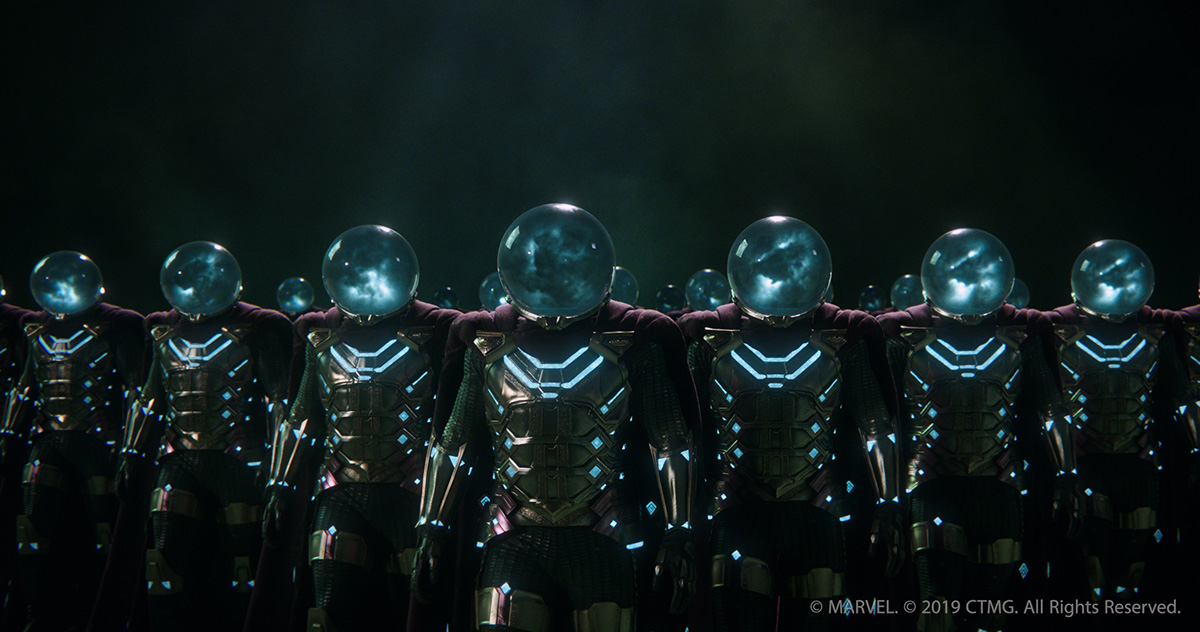
‘Crazy illusions’
The illusion battle is, indeed, a crazy whirlwind of imagery, in which Mysterio / Quentin Beck (Jake Gyllenhaal) uses his holographic techniques and projector drones against Spider-Man / Peter Parker (Tom Holland) at a construction site that ‘doubles’ as what Spider-Man initially believes is Europol. Here, Spider-Man encounters projections of his school, sees MJ falling off the Eiffel Tower, follows a ‘hyperlapse’ towards Aunt May’s house, fights reflections of his own self, and even finds himself in a valley of fallen Avengers, including a zombie Iron Man.
“It was all about showing how powerful Mysterio is and how he could create all kinds of crazy illusions and tap into Spider-Man’s fears,” says Wajsbrot, who worked under production visual effects supervisor Janek Sirrs and production visual effects producer Cyndi Ochs.
It was Framestore’s job to deliver the illusion battle imagery, which would also be interspersed with VFX for scenes of Spider-Man and Beck battling it out at the construction site. “We did receive a very early previs,” relates Wajsbrot, “but I think that may be only 10% of what the final sequence looks like in the movie. It evolved a lot.”

Framestore itself would produce concepts, previs and also ‘rapid prototypes’ for the illusion battle, the idea being to get moving images quickly into the hands of Sirrs and Ochs who would then show Marvel.
Illusions, but grounded
Central to the VFX studio’s work was a central narrative that came from a meeting with the director. “Jon wanted to make sure that Mysterio was driving the whole sequence,” says Wajsbrot. “It was very important that there was a common look to the sequence that Mysterio was driving. We decided this would be the green smoke – that’s why you see in most of these shots a green element. And rather than just tapping into Spider-Man’s fears like a horror movie, it was about trying to tap into his emotions as well. That was why we were at the school hallway, for instance, because he was worried about his school friends being in danger.
Another of Watt’s stipulations was that the illusions crafted by Mysterio made some kind of sense in the real world. “Spider-Man couldn’t fall unless he was falling in the real world,” explains Wajsbrot. “The only time you see Spider-Man falling in our sequence is when he is actually falling from the construction site building. He falls into a giant spiderweb and then onto a car.”
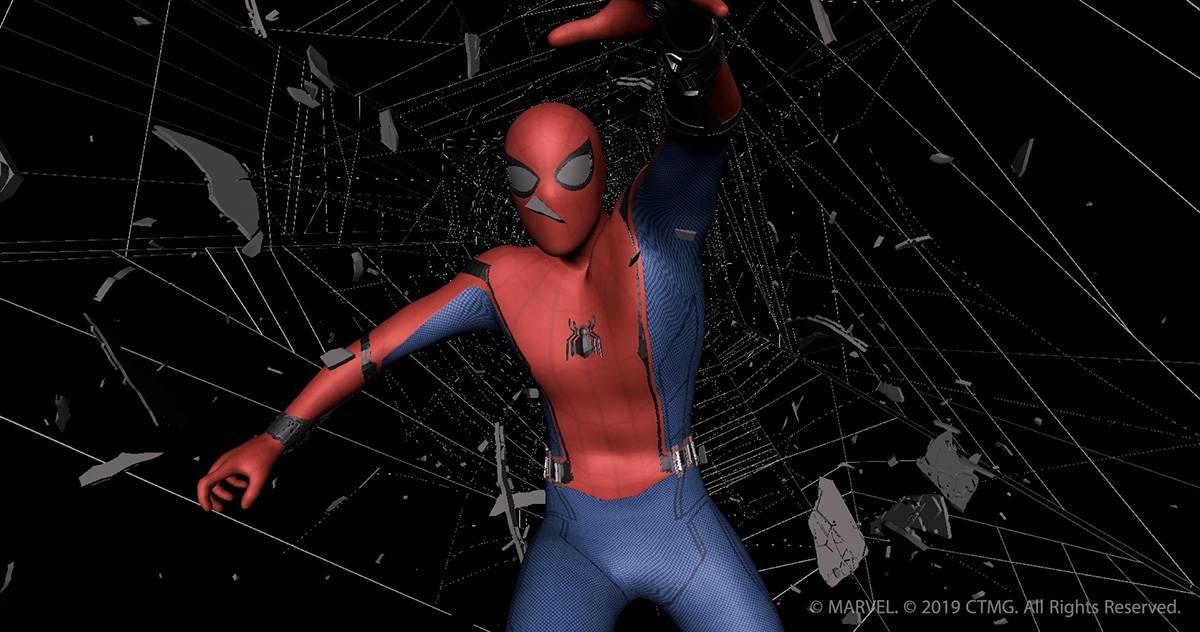

Further grounding in reality came, to some degree, from the fact that Spider-Man’s movements – achieved by Framestore with a CG Spider-Man model – were driven largely by motion capture of Tom Holland. “On a lot of shots,” states Wajsbrot, “the studio was very keen for Tom Holland to do the mocap for Spider-Man to make sure that it looked like him. You can recognize when it’s mocap done by a stunt performer or by Tom.”
Interestingly, however, that motion capture came somewhat after the fact, ie. after Framestore had already animated the performance to an almost-finished level. “Then,” says Wajsbrot, “they did basically an ‘ADR’ session, but for mocap. So they looked at our renders, and did a mocap session for Tom Holland for just about every shot, following our animation and timing. We could then almost drag and drop into our shots at the end.”
Illusion battle highlights
Here are some highlights of Framestore’s shot deliveries for the illusion battle, direct from Wajsbrot:
The valley of the fallen: Here there are giant statues of the fallen superheroes – Captain America, Iron Man, Black Widow and Vision. You probably have to press pause to see all the statues! But we did spend quite a bit of time on them. Only one statue is left standing and that is of Mysterio.

Graveyard: This is where we see zombie Iron Man, and the idea here was to show the loss of Iron Man. Designing Iron Man was quite a challenge, just like any suit for Iron Man. It had to be not too gory, but gory enough, the right balance between, do you see a bit of flesh, or only see the skull, or armor? Our art department jumped in here and did a lot of concept work.
One of the evolutions of the work was that we designed the graveyard early, and the school hallway early, but then when we re-visited them, we stylized the final shots a lot. What defines a school hallway? Maybe just the lockers are enough? The ground was green smoke, no wall or ceiling. Same for the graveyard – we removed all the grass, replaced it with black, removed the trees, the sky, and just kept the gravestone.
Spider to snowglobe: There’s the spider that jumps onto the lens and then the eyes of the spider transform into an army of Mysterios coming towards camera. You enter into one of Mysterio’s capes and then you see Spider-Man running and hitting into a giant snowglobe. And Spider-Man being locked in the snow globe and all the buildings from New York arriving from the ground and piercing the snow like a blade, and Mysterio removing the snowglobe from his head.

Hyperlapse: This is a shot where Spider-Man is in a form of light speed, and we see all the lights going into long exposure – they elongate. And what we decided to say was that he was not moving, but the world around him is moving. Spider-Man in the ‘real world’ here is static.
Eiffel Tower: This came in via references made to it that were in the movie. This was also an example of where we influenced the shoot. We had to shoot plates of MJ on top of the Eiffel Tower, so we pre-planned it by rendering a low-res digi-double of the actress, then we did some techvis that informed the camera movement and lighting to guide the plate shoot.
Europol: This was a real set that we had to match to, with the shot of it transforming into the construction site. The construction site is almost all CG on every shot. I was very happy with the work the environment team at Framestore did.

What didn’t make it into the illusion battle
Since Framestore was concepting, boarding and rapid prototyping the sequence in quick succession, some ideas did not make the final cut. “There were some crazy ideas we had proposed,” observes Wajsbrot. “At one point, for instance, there was a fight where the cape of Mysterio was creating a monster attacking Spider-Man, who was running on a chess board and there was even a piano. There really were some some crazy ideas that, thankfully, didn’t stick, because I’m not sure we would have had time to be able to do them!”
Other ideas that didn’t make the final film included a sequence involving masks at many different scales, or one where a massive spider in an equally massive spiderweb was attacking Spider-Man. “We brought that 75% to completion, but it was dropped,” says Wajsbrot.
Framestore had to also ensure that the individual vignettes in the illusion battle didn’t veer too closely to what was dubbed the ‘Magical Mystery Tour’ sequence in Doctor Strange. What that meant, to some degree, was that many of the shots were explored but then abandoned or would evolve into something slightly different.

“For example,” notes Wajsbrot, “the shot where Spider-Man falls into the spiderweb and then into the car. It started with Spider-Man falling into a black environment, just black. Then it evolved into Spider-Man falling into a world of statues of different superheroes who died in Endgame, and then they shattered into ashes. Then they decided to have him fall into New York as really long elongated buildings, so we had him falling forever. Then they thought we’d seen that in some other movies. So they went with the big spiderweb.”
For Framestore, the relatively short schedule but complex 140 shots that made up the illusion battle proved to be a very memorable project, even for the pieces that did not end up in the final sequence.
“Our editor was doing the show and tell reel for Framestore’s Far From Home work,” says Wajsbrot, “and he created what he called the ‘Rest in Peace’ story – everything that we’d done that didn’t make it in, which is almost as cool as the real showreel itself.”










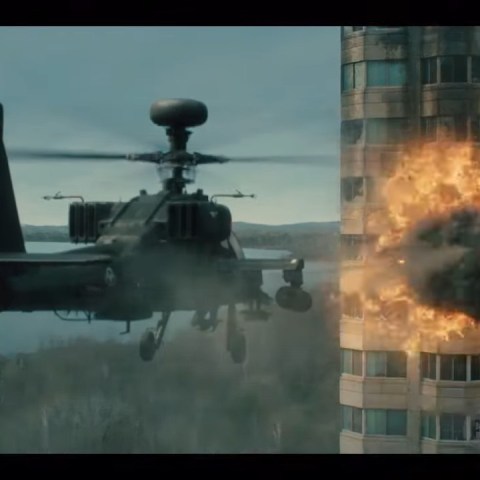
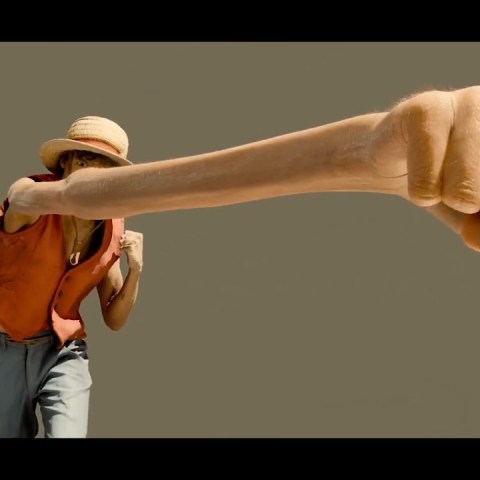





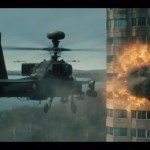
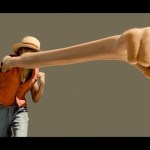
[…] thanks to Befores & Afters and Framestore, were able to savor some of the finer points of that insane trip. If you browse the […]
[…] Wajsbrot revelou ideias descartadas para as sequências de ilusões do Mystério ao Before and Afters. Segundo Wajsbrot, a cena inicial era mais curta, até que no teste de audiência revelou a […]
[…] body crawling out of the dirt. The design of Zombie Iron Man has now appeared online thanks to befores & afters, who also spoke with the film's visual effects supervisor to get a glimpse into the design […]
[…] body crawling out of the dirt. The design of Zombie Iron Man has now appeared online thanks to befores & afters, who also spoke with the film’s visual effects supervisor to get a glimpse into the design […]
[…] Marvel Cinematic Universe (insieme ai viaggi allucinati di Doctor Strange nel multiverso), e ora Befores and Afters ne racconta i retroscena con Alexis Wajsbrot, supervisore degli effetti visivi per […]
Such a good article! Fantastic read